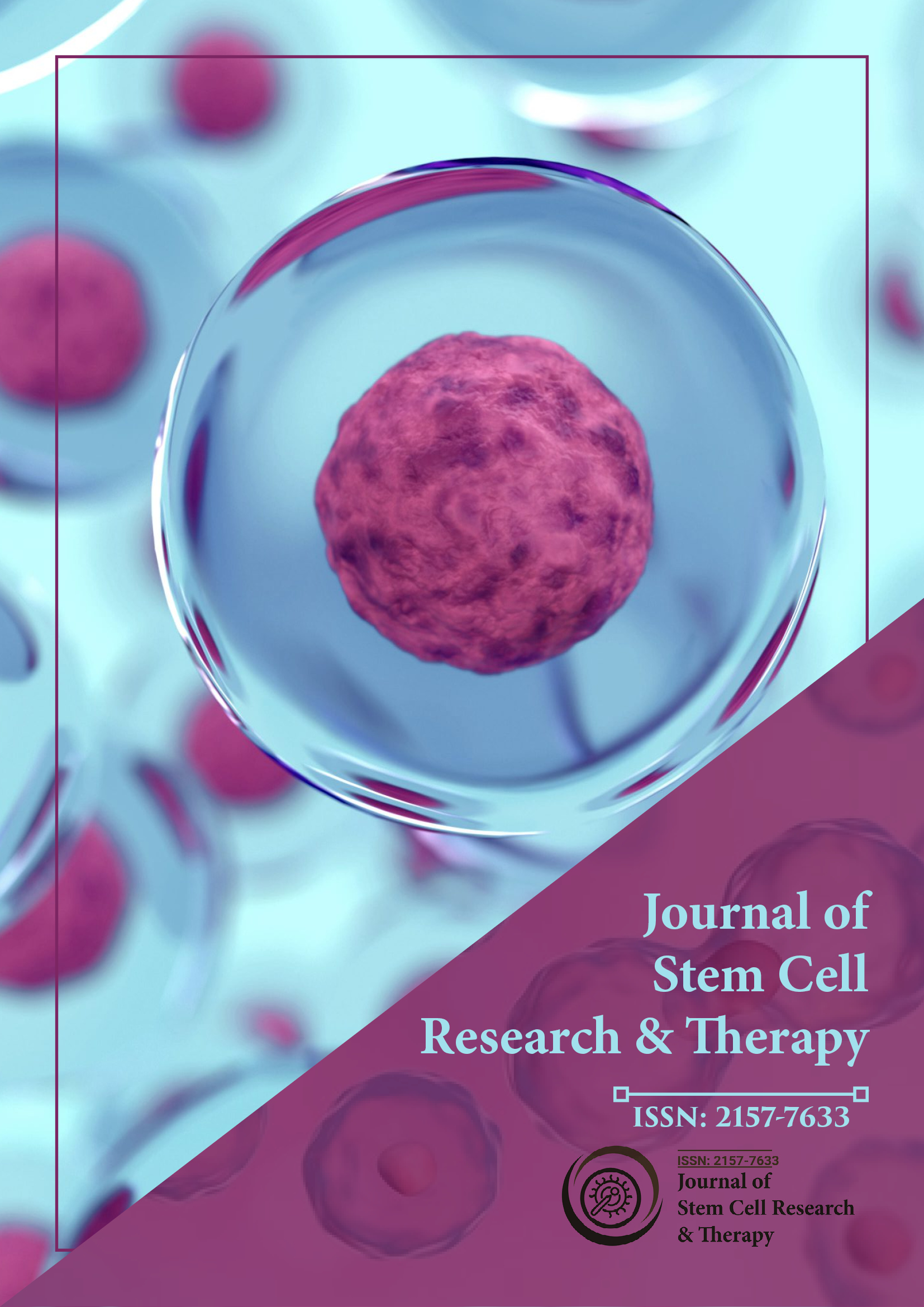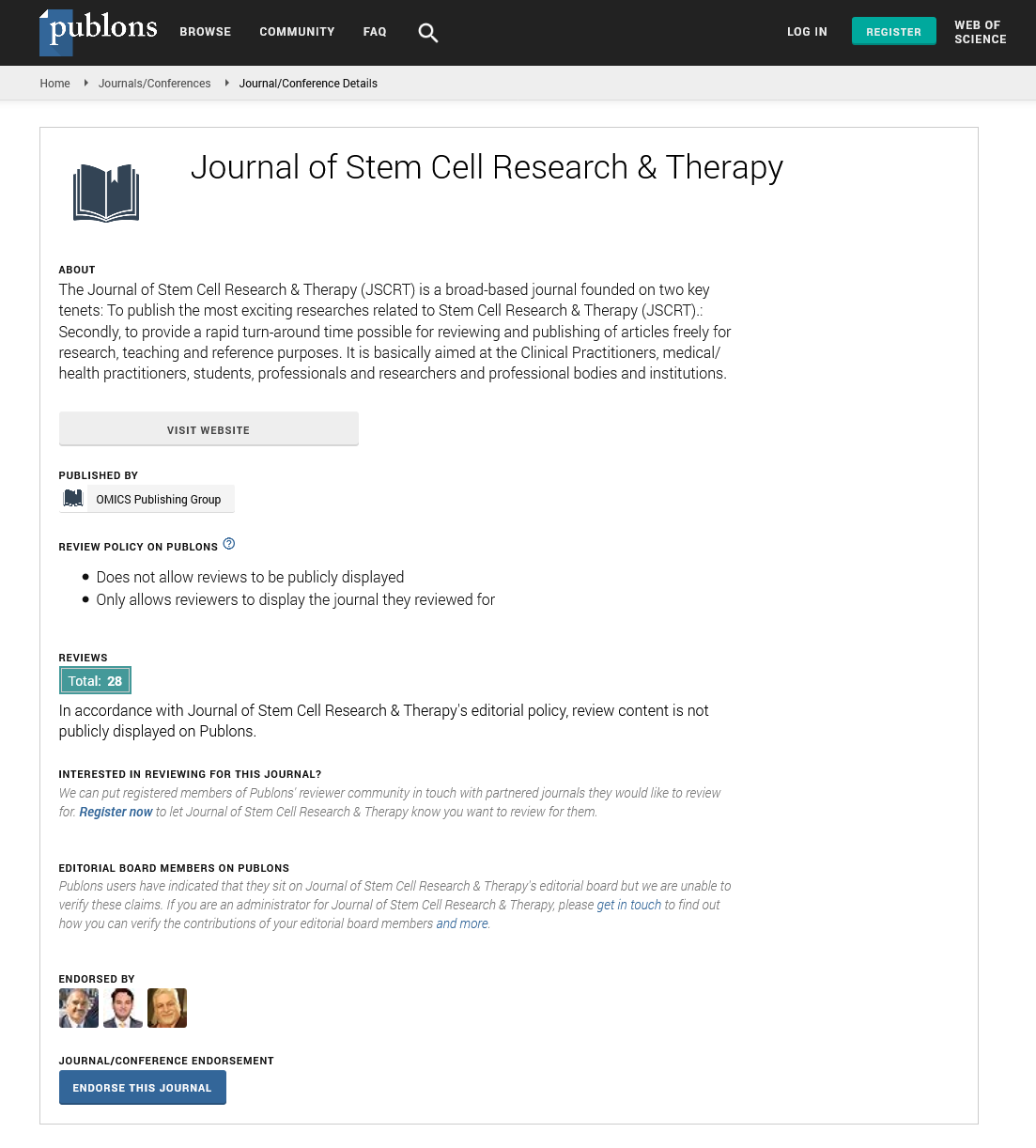Indexed In
- Open J Gate
- Genamics JournalSeek
- Academic Keys
- JournalTOCs
- China National Knowledge Infrastructure (CNKI)
- Ulrich's Periodicals Directory
- RefSeek
- Hamdard University
- EBSCO A-Z
- Directory of Abstract Indexing for Journals
- OCLC- WorldCat
- Publons
- Geneva Foundation for Medical Education and Research
- Euro Pub
- Google Scholar
Useful Links
Share This Page
Journal Flyer

Open Access Journals
- Agri and Aquaculture
- Biochemistry
- Bioinformatics & Systems Biology
- Business & Management
- Chemistry
- Clinical Sciences
- Engineering
- Food & Nutrition
- General Science
- Genetics & Molecular Biology
- Immunology & Microbiology
- Medical Sciences
- Neuroscience & Psychology
- Nursing & Health Care
- Pharmaceutical Sciences
Endogenous stem cell mobilization: A novel therapeutic approach
Christian Drapeau
Abstract:
Bone marrow stem cells (BMSC) are self-renewing undifferentiated cells that have been traditionally considered as precursors to blood cells. However, many recent studies have established that the ability of BMSC to differentiate into other types of cells goes far beyond blood cells; when put in presence of various tissues, BMSC can differentiate in functional cells of that tissue, including brain, liver, pancreatic, lung, and muscle tissues. In fact, BMSC seems to constitute the natural repair system of the body. Whenever the body is subjected to an injury or a degenerative process, the affected area secretes compounds such a Granulocyte-Colony Stimulating Factor (G-CSF), which is a well known mobilizer of BMSC. The affected tissue also secretes Stromal Derived Factor-1 (SDF-1), a compound that specifically binds to CXCR4 on the surface of circulating stem cells, triggering the process of migration in the affected tissue. As they migrate in a tissue, stem cells proliferate and then differentiate into cells of that tissue. This presentation will briefly review the various technologies developed around the use of both embryonic stem cells and adult stem cells, focusing on a novel approach referred to as Endogenous Stem Cell Mobilization (ESCM). Simply stimulating the release of stem cells from the bone marrow, therefore increasing the number of circulating stem cells available to migrate in various tissues, has been shown to be a promising therapeutic approach tapping into the potential of adult stem cells. For example, BMSC have been shown to have the ability to migrate on their own into the pancreas and differentiate into functional insulin-producing cells, while triggering the release of BMSC has been shown to rescue streptozotocin-induced diabetes in mice. Likewise, G-SCF-induced BMSC mobilization has been shown to enhance recovery after experimental stroke and acute myocardial infarction in mice. Aside from a purely therapeutic approach, the recent discoveries in the field of stem cell research points into an entirely new direction in our understanding of the aging process. The development of many diseases such as cardiomyopathy, diabetes, arthritis, kidney failure, pulmonary diseases, muscular dystrophy and even erectile dysfunction have been linked to a lower number of circulating stem cells. Any treatment or lifestyle strategy shown to increase the number of circulating stem cells should be studied as potential anti-aging modalities.

